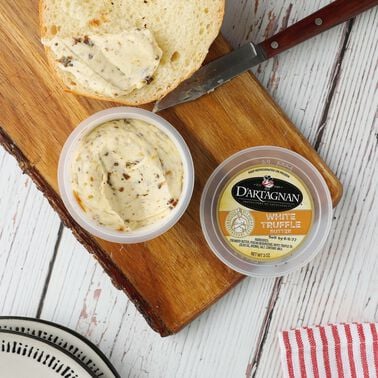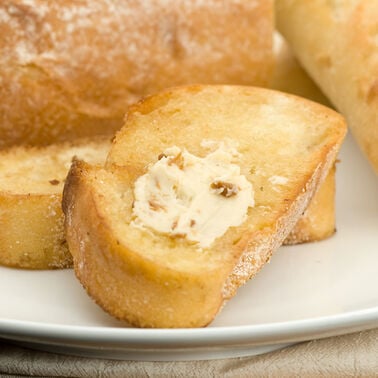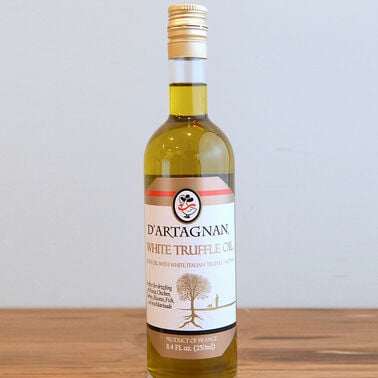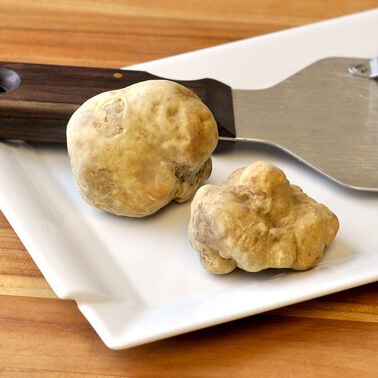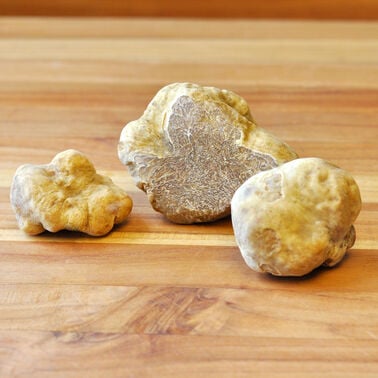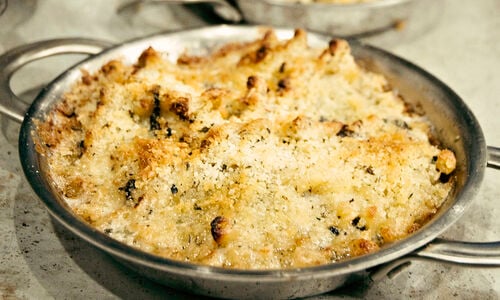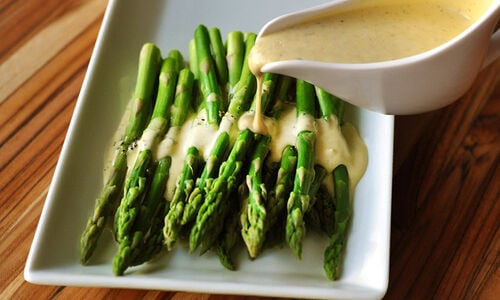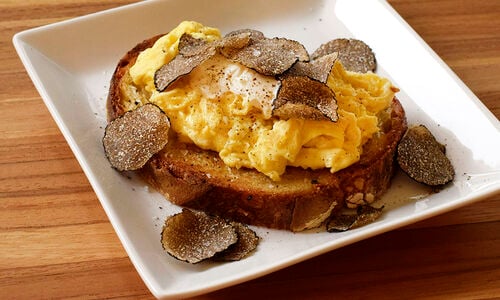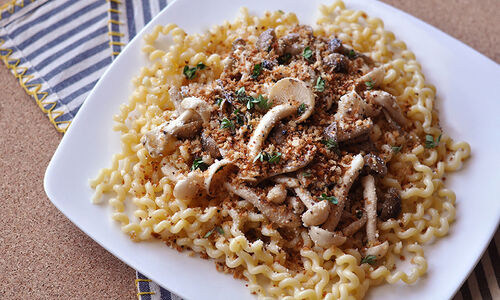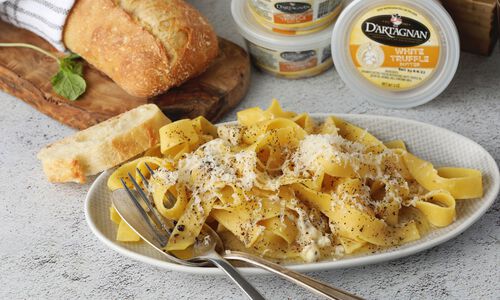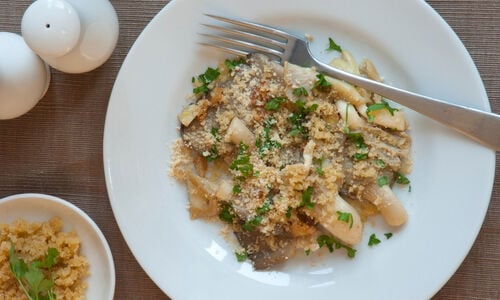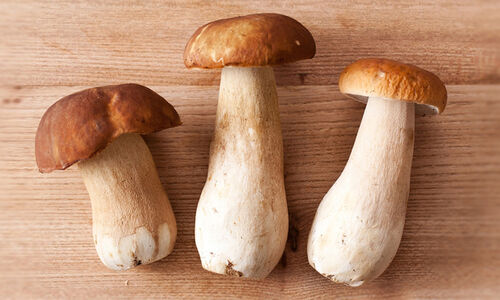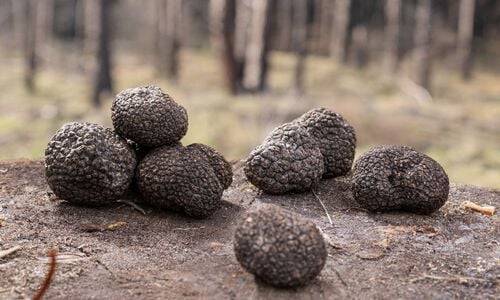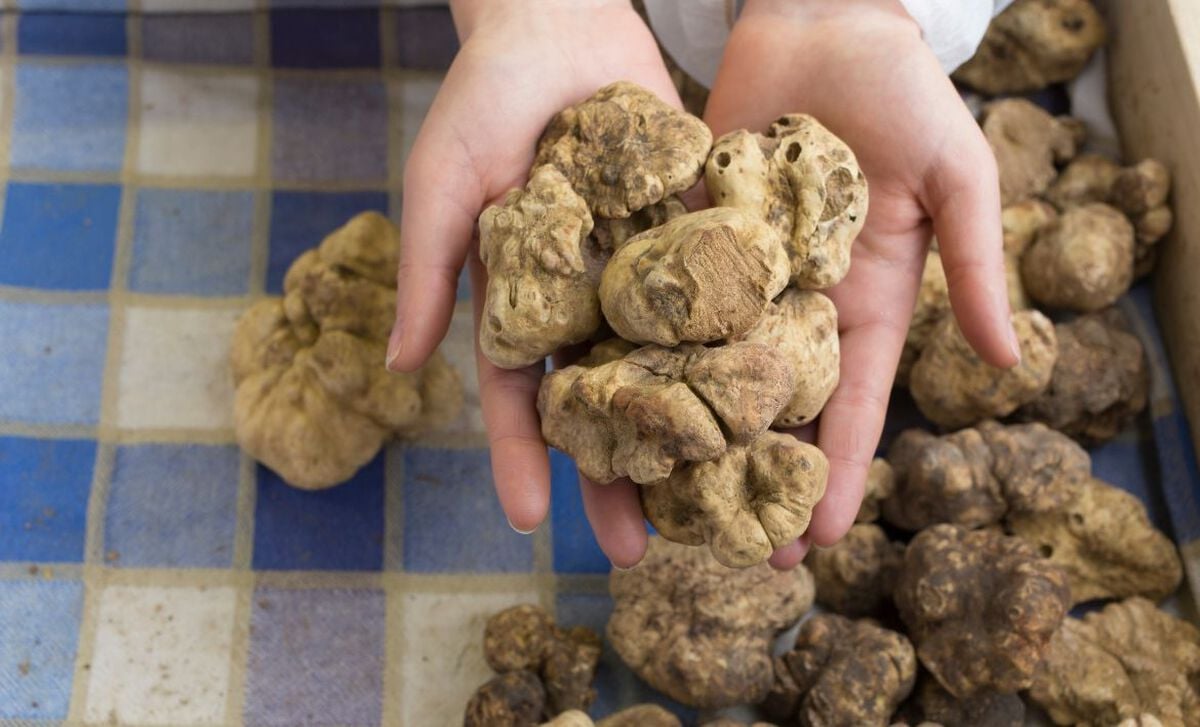
The winter white truffle (Tuber magnatum) is sometimes called a Piedmont or Alba Truffle because Italy has been blessed with an abundance of white truffles. Harvested from October to December, the short winter season adds to the mystique that surrounds this fungus.
Truffles grow a few inches down in the earth, in symbiosis with the roots of hardwood trees like oaks, chestnuts, hazelnut, and hornbeam. The irregularly shaped knobby little spheres range in size from an inch or so across to over a pound (though truffles of that size are rare). The firm flesh of a white truffle is pale cream to light brown in color, with white marbling throughout.
These fragrant fungi are located by the keen noses of specially trained dogs that can smell them through the earth. Pigs had been traditionally used for this task until the human truffle hunters grew weary of them eating too many of the valuable truffles. Sows (the female pig) instinctively seek truffles because they emit a scent identical to porcine pheromones, which explains their intense ardor.
The Eternal Appeal of White Truffles
Why human beings find truffles so appealing is all part of their mystery. It is difficult to express the nuances of flavor in a white truffle, though it is often described as garlicky, or reminiscent of shallots (but who has ever paid hundreds of thousands of dollars for a shallot?). But that description does not do justice to its earthy flavor with a hint of the nuts from the trees whose roots shelter the truffles. The white truffle is pungent and unforgettable, a mixture of mineral and animal secretion with woodsy notes.
The white truffle must awaken something primal in those who eat it, because its adherents are many, and they are passionate. Truffles are the true fruit of the earth, rarer and more precious than any other edible root, tuber, or mushroom. There is no other flavor like them on earth, which is perhaps why they are so often described as heavenly.
There have been many attempts to domestic these wild truffles, though they can take a decade to grow. Some of these attempts have been successful, but the most reliable source is still to forage for them in nature.
How to Eat White Truffles
For preparation, keep in mind that white truffles are almost never cooked. The power of their flavor is in their strong scent, and cooking them will destroy that. Simply slice them thinly (a truffle shaver is a must for this task) over a finished dish of pasta, risotto, etc., and allow the heat of the food to release the aroma.
You will often see truffles stored in dry rice, but this actually dehydrates the precious fungi, so unless your goal is to infuse the rice with truffle aroma, we do not recommend it. A fun tip is to place your truffle in the refrigerator with eggs. The eggs will have a distinct truffle flavor when used.
As to the high price, we turn once again to the great Brillat-Savarin who declared that “as one of the great values of truffles is their dearness, perhaps they would be less highly esteemed if they were cheaper.”
Layers of Truffle Flavor
Of course, there are ways to get that white truffle flavor on your plate without spending a fortune. White truffle butter is an affordable luxury year-round and does wonders when it is whipped into mashed potatoes, stuffed under the skin of a chicken or turkey before roasting, and stirred into mac n’ cheese, pasta, or rice. Many chefs use truffle-flavored products like oil or butter to enhance and add nuance to a dish that will be crowned with shaved white truffle. Some just like to spread white truffle butter on their toast.
